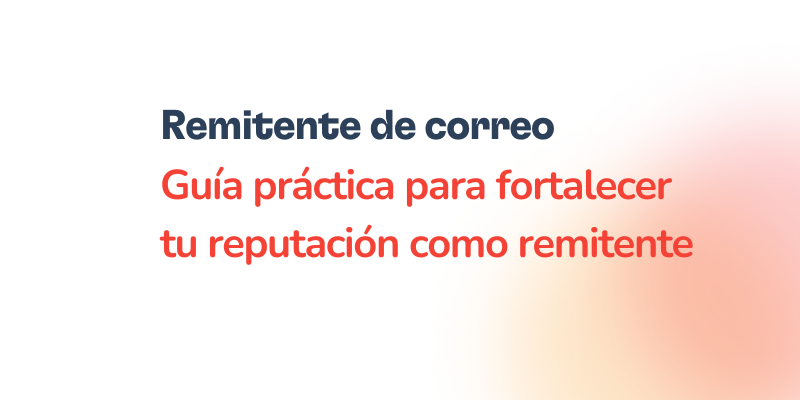For businesses, optimizing email subject lines is one of the most important aspects of running a successful conversation.
However, it’s no easy feat – after all, you only have 50 characters to make your message stand out among dozens of competitors in the recipient’s inbox.
That’s why it’s essential to craft clever and engaging subject headlines that are sure to spark curiosity in readers and encourage them to open your email and take action!
Whether you’re looking for knowledge on what makes a great headline or inspiration from some winning examples, this article has got you covered.
Keep reading for all the best practices tips plus more than 70 effective email subject line templates that will help boost your click-through rate (CTR) today!
What are email marketing newsletters?
Email marketing newsletters are a type of marketing communication that businesses use to send regular emails to their subscribers, customers, or potential customers. These emails typically contain information about the business’s products, services, promotions, or other relevant news.
Email marketing newsletters are often sent on a regular schedule, such as weekly or monthly, and are designed to keep the business top of mind with their audience. They can be used to build brand awareness, promote products or services, drive traffic to a website or physical location, or build relationships with customers.
Email marketing newsletters can be highly effective when executed well, as they allow businesses to directly reach their audience in a cost-effective manner. However, it’s important for businesses to ensure their newsletters are engaging, informative, and relevant to their audience in order to maximize the impact of their email marketing efforts.
Email newsletter best practices
☑ Define your audience
Identify who your target audience is and tailor your content to their interests and needs.
☑ Create an engaging subject line
Your subject line should grab the reader’s attention and entice them to open the email.
☑ Keep it simple and focused
Don’t overwhelm your readers with too much information. Keep your message simple, concise, and focused on one or two topics.
☑ Use a clear and recognizable sender name
Use a sender name that is recognizable to your subscribers, such as your business name or a person they are familiar with.
☑ Design for mobile
Many people read emails on their mobile devices, so make sure your newsletter is optimized for mobile viewing.
☑ Include a call-to-action (CTA)
Your newsletter should include a clear and prominent call-to-action that encourages your subscribers to take action.
☑ Test and optimize
Test different elements of your newsletter, such as subject lines, send times, and content, to see what works best for your audience. Use this information to optimize future newsletters.
☑ Segment your list
Segment your email list based on subscriber behavior or demographics to ensure you are sending targeted and relevant content.
☑ Stay consistent
Maintain a consistent schedule for sending your newsletters to keep your subscribers engaged and expecting your content.
By following these best practices, you can create effective email newsletters that engage your subscribers, drive traffic to your website, and help grow your business.
How to write the perfect email subject line?
There is no single formula for writing the perfect email subject line, as what works best can vary depending on your audience, the content of your email, and your specific goals. However, here are some tips for crafting effective email subject lines:
✔ Be concise: Keep your subject line short and to the point, ideally no more than 5-7 words.
✔ Be specific: Use clear and specific language that accurately reflects the content of your email.
✔ Use action-oriented language: Use language that encourages the reader to take action, such as “Don’t miss out on…” or “Limited time offer”.
✔ Personalize the subject line: Use the recipient’s name or other personal information to make the email feel more personalized.
✔ Use urgency: Create a sense of urgency by using language such as “Last chance” or “Limited time offer”.
✔ Use numbers or statistics: Use numbers or statistics to make your email subject line more compelling, such as “10 tips for…” or “Increase your sales by 50%”.
✔ Avoid spam triggers: Avoid using words or phrases that can trigger spam filters, such as “Free”, “Urgent”, or excessive use of punctuation or capital letters.
✔ Test and optimize: Test different subject lines and use data to optimize future emails based on what works best for your audience.
Remember, the email subject line is the first thing your recipient sees, and it can determine whether they open your email or not. Spend time crafting a compelling subject line that accurately reflects the content of your email and encourages the recipient to open it.
Let’s now look at examples of writing email subject lines for specific topics
10 welcome email subject sines
Here are 10 welcome email subject lines that can help you create a strong first impression with your new subscribers:
🔹 Welcome to [Company Name]: Here’s What You Need to Know
🔹 Thanks for Joining [Company Name] – Let’s Get Started!
🔹 Your [Company Name] Membership is Confirmed
🔹 Welcome to [Company Name] Community
🔹 Get Ready to Unlock Exclusive [Company Name] Benefits
🔹 You’re in! Welcome to [Company Name] Family
🔹 Welcome Aboard! Here’s What’s Next…
🔹 [Company Name] Welcomes You: Here’s What to Expect
🔹 Thanks for Signing Up! Here’s a Special Offer Just for You
🔹 [Company Name] Welcomes You to Our Newsletter – Let’s Stay Connected
Remember to make your welcome email personalized, friendly, and informative. Provide clear guidance on what subscribers can expect from your emails, any special offers or benefits they will receive, and how they can get in touch with your business if needed.
10 B2B email subject lines
Here are 10 B2B email subject lines that can help you capture the attention of your business audience:
🔹 [Name of Prospect], Are You Struggling with [Pain Point]?
🔹 [Name of Prospect], [Company Name] Can Help You Achieve [Specific Goal]
🔹 How [Industry or Niche] Leaders Are Solving [Problem]
🔹 [Company Name] Presents: [Event or Webinar Title]
🔹 [Name of Prospect], Want to Know How You Can Save X Amount on [Product/Service]?
🔹 [Name of Prospect], Let’s Talk [Solution or Benefit]
🔹 [Company Name] Exclusive Offer: [Discount or Promotion]
🔹 [Name of Prospect], [Competitor Name] Is Already Taking Advantage of This Opportunity
🔹 [Name of Prospect], Discover the Latest Trends in [Industry or Niche]
🔹 [Name of Prospect], We Have Something You Might Be Interested In
Remember to keep your B2B email subject lines concise, specific, and relevant to your target audience. Focus on addressing the pain points or goals of your prospects, highlighting the value that your product or service can bring to their business, and providing a clear call to action. Also, avoid using spammy words or phrases, such as “Free” or “Urgent,” as they may trigger spam filters and harm the deliverability of your emails.
10 reconnecting email subject line
A reconnecting email subject line is a phrase used to grab the attention of someone you haven’t talked to in a while, with the aim of reconnecting and restarting the conversation. Reconnecting emails are often used in professional settings, such as following up with former clients, colleagues, or networking contacts, but can also be used in personal relationships. The goal of a reconnecting email is to reignite a relationship or conversation that has gone dormant and to find new opportunities for collaboration, networking, or personal growth.
🔹 It’s been a while, let’s catch up!
🔹 [Name], long time no talk!
🔹 Let’s reconnect and chat about [topic of interest]
🔹 A blast from the past: [Name], how are you doing?
🔹 [Name], it’s been too long – let’s schedule a call
🔹 Reconnecting after [time frame]: How have you been?
🔹 Hey [Name], just wanted to say hi and see how you’re doing
🔹 We should catch up: [Shared Interest or Experience]
🔹 [Name], I miss our conversations – let’s reconnect soon
🔹 Reconnecting and sharing some exciting news with you
10 Thank you email after interview subject line
Here are 10 subject lines for thank-you emails after a job interview:
🔹 Thank you for the opportunity to interview with [Company Name]
🔹 [Name], it was great meeting you – Thank you!
🔹 Following up on our interview – Thank you for your time
🔹 Appreciating your time and the opportunity to interview
🔹 Thank you for taking the time to meet with me
🔹 Grateful for the interview and the chance to learn more about [Company Name]
🔹 Thank you for considering me for the [Job Title] position
🔹 Thank you for the insightful conversation and sharing more about [Company Name]
🔹 Appreciating the opportunity to learn more about [Company Name] and the [Job Title] role
🔹 Thank you for the interview – Looking forward to hearing back
Remember to personalize your subject line and express gratitude for the opportunity to interview. Reiterate your interest in the position and the company, and try to reference something specific that you discussed during the interview to show your attentiveness and engagement. Also, keep your email concise and to the point, while making sure to follow up on any outstanding items or action items from the interview.
10 resignation email subject line
Here are 10 resignation email subject lines that you can use to communicate your decision to leave your current job:
🔹 Resignation Notice – [Your Name]
🔹 Formal Resignation – [Your Name]
🔹 My Resignation – [Your Name]
🔹 Moving On – [Your Name]’s Resignation
🔹 Notice of Resignation – [Your Name]
🔹 Resignation Effective [Date] – [Your Name]
🔹 Departing [Company Name] – [Your Name]’s Resignation
🔹 Thank You and Farewell – [Your Name]’s Resignation
🔹 Resignation Announcement – [Your Name]
🔹 Transitioning Out – [Your Name]’s Resignation Notice
Remember to keep your resignation email subject line professional and to the point, while reflecting your personal tone and style. Be clear and specific about your resignation date and your reasons for leaving, if appropriate. It’s also a good practice to thank your employer and colleagues for the opportunities and experiences you had while working with them, and to offer your assistance in transitioning your work or knowledge to someone else. Finally, make sure to follow up with a formal resignation letter or in-person conversation, as required by your employer’s policies and your employment agreement.
10 subject line for Thank you email
Here are 10 subject lines for thank-you emails for different occasions:
🔹 Thank you for your time and consideration
🔹 Grateful for your support and encouragement
🔹 Thank you for the opportunity to [event or experience]
🔹 Appreciating your generosity and kindness
🔹 Thanks for being an inspiration and role model
🔹 Thank you for making a difference in my life
🔹 Showing appreciation for your hard work and dedication
🔹 Thank you for your collaboration and teamwork
🔹 Expressing gratitude for your help and guidance
🔹 Thank you for being a part of my journey
Remember to personalize your subject line and express sincere gratitude for the specific act or support that you are thanking the recipient for. Be specific and detailed about what you are grateful for and how it made a difference in your life or work. Use a friendly and professional tone, and keep your email concise and to the point. Finally, don’t forget to follow up with a handwritten note, a phone call, or an in-person thank-you, depending on the circumstances and the level of formality involved.
10 follow up email subject line
🔹 Checking In – [Your Name]
🔹 Follow-Up on [Meeting/Event/Conversation] – [Your Name]
🔹 [Recipient Name], Quick Question – [Your Name]
🔹 Recap of [Meeting/Event/Conversation] – [Your Name]
🔹 Touching Base – [Your Name]
🔹 [Recipient Name], Can We Connect Soon? – [Your Name]
🔹 Following Up on [Action Item/Request] – [Your Name]
🔹 Reminder: [Deadline/Meeting/Event] – [Your Name]
🔹 [Recipient Name], Did You Have a Chance to Review? – [Your Name]
🔹 Next Steps – [Your Name]’s Follow-Up
Remember to make your follow-up email subject line clear and specific, so that the recipient understands what you are following up on and why it matters. Be polite and professional, and avoid using urgent or aggressive language that may put off the recipient. If appropriate, reference the previous email or conversation to show that you are aware of the context and the history of the communication. Finally, make sure to include any relevant attachments, links, or documents that may help the recipient respond to your follow-up email.
Email subject line generator
An email subject line generator is a tool that helps you create effective and engaging subject lines for your email campaigns. It can be a web-based application, a software program, or a plugin that you can integrate into your email marketing platform. The email subject line generator typically uses a variety of algorithms and data points to generate subject lines that are optimized for your specific audience, content, and goals.
Most email subject line generators ask you to input some information about your email campaign, such as the topic, the audience, the tone, and the call-to-action. Some generators also allow you to input specific keywords or phrases, or to choose from a list of pre-defined subject lines. Once you provide this information, the generator analyzes it and suggests several subject lines that are most likely to engage and entice your audience to open and read your email.
Using an email subject line generator can save you time and effort in crafting effective subject lines, and can also help you optimize your email campaigns for better results. However, it’s important to keep in mind that not all generated subject lines will be equally effective, and that you should always test and evaluate the performance of your subject lines to see what works best for your specific audience and content.
Here are a few email subject line generators that you can use to generate subject lines for different types of emails:
✔ Hubspot’s Email Subject Line Generator – This free tool generates subject lines based on keywords and themes that you provide. It offers different categories such as event, product launch, webinar, and newsletter, and provides several options for each category.
✔ CoSchedule’s Email Subject Line Tester – This free tool evaluates the effectiveness of your email subject line based on factors such as length, word choice, and emotional appeal. It provides a score and feedback on how to improve your subject line.
✔ Sendinblue’s Email Subject Line Generator – This free tool generates subject lines based on your industry, your audience, and your goals. It offers several options for each category, and allows you to customize the subject line further.
✔ Zest’s Email Subject Line Generator – This free tool generates subject lines based on your input of a few words or phrases. It offers several options for each input, and allows you to customize the subject line further.
✔ Sumo’s Email Subject Line Generator – This free tool generates subject lines based on your input of a few words or phrases, and offers several options for each input. It also provides tips and examples on how to craft effective subject lines.
Remember to use these generators as a starting point, and to customize your subject line to fit your specific message and audience. Always keep your subject line clear, specific, and engaging, and avoid using misleading or spammy language that may harm your email deliverability and reputation.
Conclusion
Crafting the perfect email subject line can be a tricky business. When writing an email, your goal should be to come up with something that will capture the recipient’s attention, give them a hint of what the body of the message is about, and peak their interest without being overly long.
The best way to go about this is by making sure your subject lines are clear and concise, using appropriate keywords, formatting correctly using punctuation and capitalization, including personalization whenever possible and avoiding spam triggers.
You now have 70 examples to get you started along with these best practices in mind. With some crafting practice, you should be able to come up with creative yet still effective subject line ideas for all your most important emails! Don’t forget that testing different variations of your subject lines goes along way towards maximizing engagement with your emails too.
To ensure that both open rates and click-throughs stay high, tweak the details so they consistently engage readers. Stand out from other marketers’ emails and make sure your audience knows exactly why they should take action right away – or at least consider taking it soon!






![Text on a white background reads: SMTP Error 451 How to Resolve [SOLVED] in bold black and red text. A faint, blurred orange spot in the lower right corner adds subtle emphasis to the SMTP Error 451 issue.](https://warmy-blog-wordpress-bucket.s3.amazonaws.com/wp-content/uploads/2025/12/24095059/SMTP451.webp)





